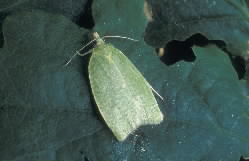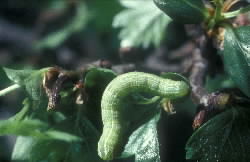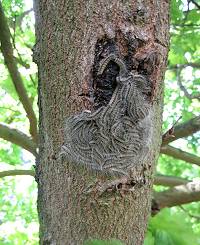Biotic factors that contribute to oak decline
Oak trees carry a wide diversity of insect species, most of which remain ‘in balance’ with their host trees and cause very little damage. However, if episodes of severe defoliation are a regular factor, this could affect the vulnerability of oak trees to the complex of factors that contribute to the overall decline syndrome.
Most notable among the early season defoliators are oak leaf roller moth Tortrix viridana (below left) and winter moth (below right). Both species have egg hatch times to coincide with bud burst in the spring, and the young larvae feed on the newly expanding leaves. When numbers are high, complete defoliation of trees can occur, but a second flush of leaves later in the season partially offsets the negative effect on trees. However, it is likely that severe defoliation does reduce the ability of trees to defend themselves from attack by other agents.
 |
 |

The recent arrival of oak processionary moth (Thaumetopoea processionea) (left) from continental Europe, which is currently restricted to London and surrounding counties, adds another highly damaging defoliator species to the range of leaf-feeding pests on oak.